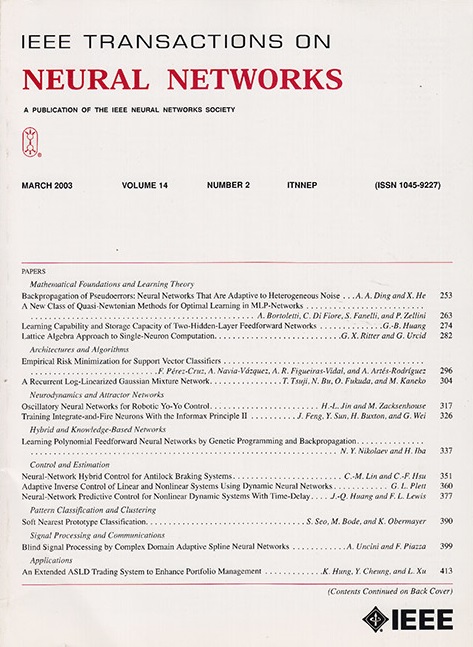基于双层非对称相互学习的无监督领域自适应的人再识别。
IF 10.2
1区 计算机科学
Q1 COMPUTER SCIENCE, ARTIFICIAL INTELLIGENCE
IEEE transactions on neural networks and learning systems
Pub Date : 2023-11-07
DOI:10.1109/TNNLS.2023.3326477
引用次数: 0
摘要
无监督域自适应(UDA)人再识别(Re-ID)旨在利用辅助标记源域数据集识别未标记目标域内的行人图像。许多现有的工作试图通过考虑多个同质网络来恢复可靠的身份信息。并将这些生成的标签用于在目标域中训练模型。然而,这些同构网络在近似的子空间中识别人,并平等地与他人或他们的均值网交换他们的知识以提高他们的能力,不可避免地限制了可用知识的范围,并使他们陷入同样的错误。本文提出了一种双层非对称互学习(DAML)方法,用于在具有不同嵌入空间的更宽知识范围内学习判别表示。具体地说,两个异构网络以硬蒸馏的方式通过伪标签生成从不对称子空间相互学习知识。两个网络之间的知识转移是基于非对称相互学习(AML)方式的。教师网络学习识别目标域和源域,同时根据学生的知识适应目标域分布。同时,在目标数据集上训练学生网络,并通过教师的知识使用基本事实标签。在Market-1501、中大-SYSU和MSMT17公共数据集上进行的大量实验验证了DAML相对于现有技术(SOTA)的优势。本文章由计算机程序翻译,如有差异,请以英文原文为准。
Unsupervised Domain Adaptation on Person Reidentification Via Dual-Level Asymmetric Mutual Learning
Unsupervised domain adaptation (UDA) person reidentification (Re-ID) aims to identify pedestrian images within an unlabeled target domain with an auxiliary labeled source-domain dataset. Many existing works attempt to recover reliable identity information by considering multiple homogeneous networks. And take these generated labels to train the model in the target domain. However, these homogeneous networks identify people in approximate subspaces and equally exchange their knowledge with others or their mean net to improve their ability, inevitably limiting the scope of available knowledge and putting them into the same mistake. This article proposes a dual-level asymmetric mutual learning (DAML) method to learn discriminative representations from a broader knowledge scope with diverse embedding spaces. Specifically, two heterogeneous networks mutually learn knowledge from asymmetric subspaces through the pseudo label generation in a hard distillation manner. The knowledge transfer between two networks is based on an asymmetric mutual learning (AML) manner. The teacher network learns to identify both the target and source domain while adapting to the target domain distribution based on the knowledge of the student. Meanwhile, the student network is trained on the target dataset and employs the ground-truth label through the knowledge of the teacher. Extensive experiments in Market-1501, CUHK-SYSU, and MSMT17 public datasets verified the superiority of DAML over state-of-the-arts (SOTA).
求助全文
通过发布文献求助,成功后即可免费获取论文全文。
去求助
来源期刊

IEEE transactions on neural networks and learning systems
COMPUTER SCIENCE, ARTIFICIAL INTELLIGENCE-COMPUTER SCIENCE, HARDWARE & ARCHITECTURE
CiteScore
23.80
自引率
9.60%
发文量
2102
审稿时长
3-8 weeks
期刊介绍:
The focus of IEEE Transactions on Neural Networks and Learning Systems is to present scholarly articles discussing the theory, design, and applications of neural networks as well as other learning systems. The journal primarily highlights technical and scientific research in this domain.
 求助内容:
求助内容: 应助结果提醒方式:
应助结果提醒方式:


